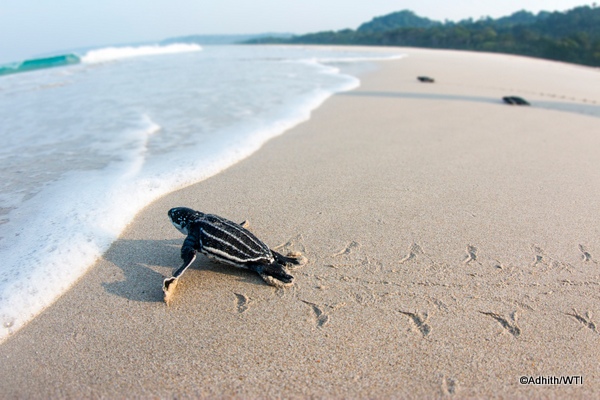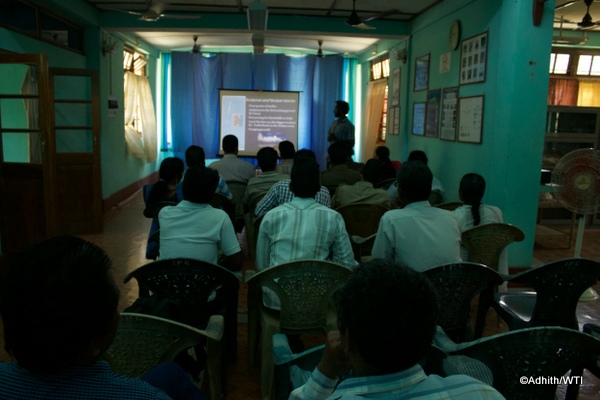29
Nov
Survey, Workshop on Leatherback Turtle Nesting in the Nicobar Islands
0 Comment
Nicobar Islands, July 01, 2016: The leatherback turtle (Dermochelys coriacea) is the largest of all living sea turtles, easily differentiated from other sea turtles by the semi-flexible ‘leathery’ skin on its carapace. The leatherback is listed as Vulnerable on the IUCN Red List, but many subpopulations (such as those in the Pacific and Southwest Atlantic) are considered Critically Endangered. The Indian Wild Life (Protection) Act, 1972, accords the leatherback the highest level of protection under Schedule I (Part II).
The Nicobar Islands support one of the largest leatherback sea turtle populations in the Indian Ocean Region. Studies carried out in the region observed that the highest nesting densities of these turtles were on the Great Nicobar, but their population in this region had not yet been properly assessed, mainly due to logistics. The 2004 tsunami also severely affected the Andaman and Nicobar Islands and the impact of the resultant drastic shoreline changes on the status and distribution of leatherbacks was poorly understood. Post-tsunami reports had indicated that the evergreen forests and mangroves that once existed along the coast had been completely destroyed and replaced by vast stretches of sand and beach vegetation that extended a few kilometres landward. Numerous turtle nests were also revealed to be lying below the high tide line.
To address this information lacuna and develop future concrete conservation measures, WTI supported Adhith Swaminathan of the Dakshin Foundation through a Rapid Action Project aimed at conducting comprehensive surveys to assess the status and distribution of leatherback turtle nesting sites. The entire Nicobar group of islands was surveyed to determine the status of previously known nesting sites, identify new nesting beaches and understand current nesting intensities on these islands.
The survey results showed that the Great Nicobar and Little Nicobar islands continue to be prime nesting sites for leatherback turtles in the region. Around 400 nests were reported in Galathea National Park alone, and other important nesting sites were found in Alexandria Bay, Dagmar Bay and Safed Balu. Most of the beaches in this region have formed again and there is a marked increase in the number of leatherback nesting sites despite predation by feral pigs and monitor lizards. However, certain beaches that were severely damaged by the 2004 tsunami, particularly on Great Nicobar, still have dead trees and tree debris along the coast, which could be preventing sea turtles from nesting on them. Several previously known nesting beaches are also either partially or fully inundated during high tide.
In addition, the nests of other sea turtles such as the Green, Olive ridley and Hawksbill have also been documented. This, however, is just a preliminary assessment; more rapid and intensive surveys should be carried out on nesting beaches to assess the status of leatherback turtles in Andaman and Nicobar islands.
WTI also conducted a training workshop on hatchery management and monitoring protocols for the Andaman & Nicobar Islands Forest Department at Campbell Bay In March this year. The workshop was a success and the DFO, Campbell Bay, requested the RAP team to conduct another workshop before the start of the nesting season next year.











